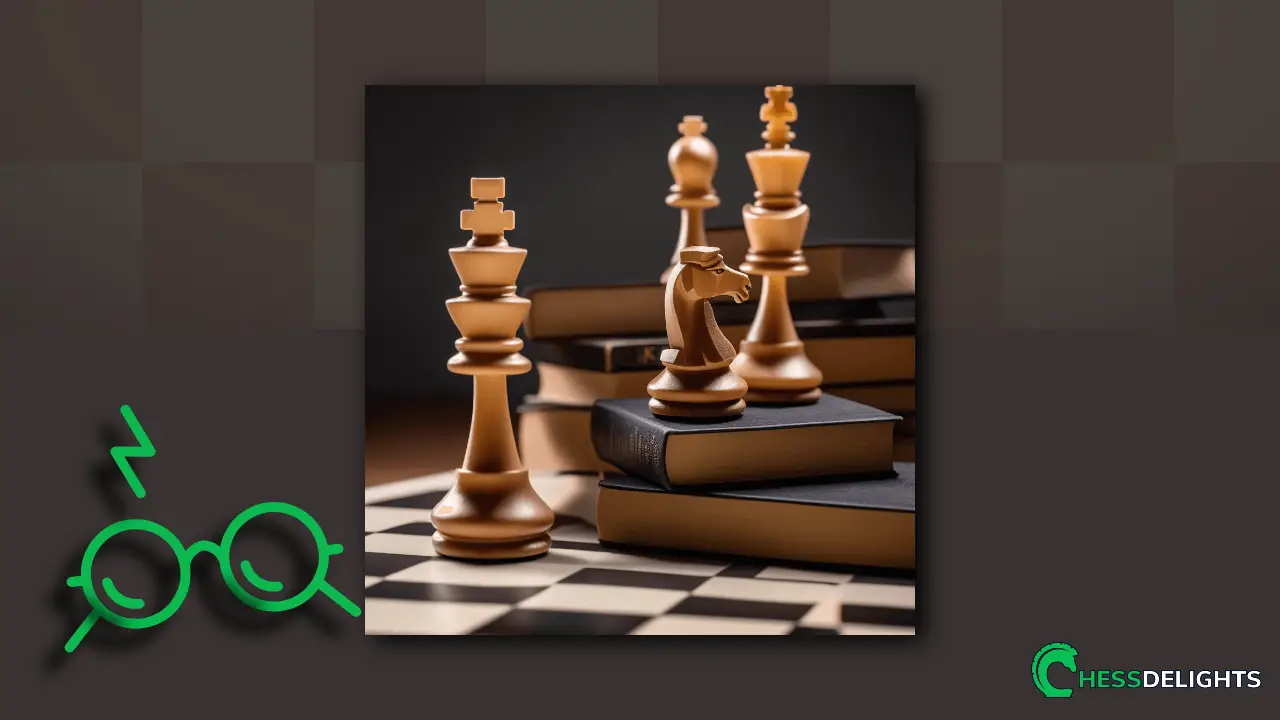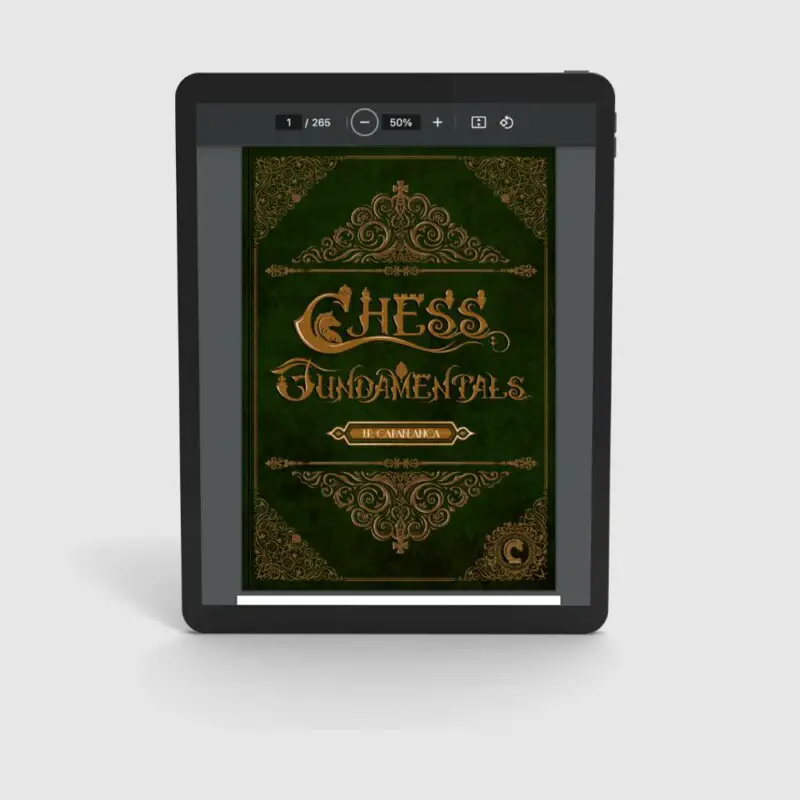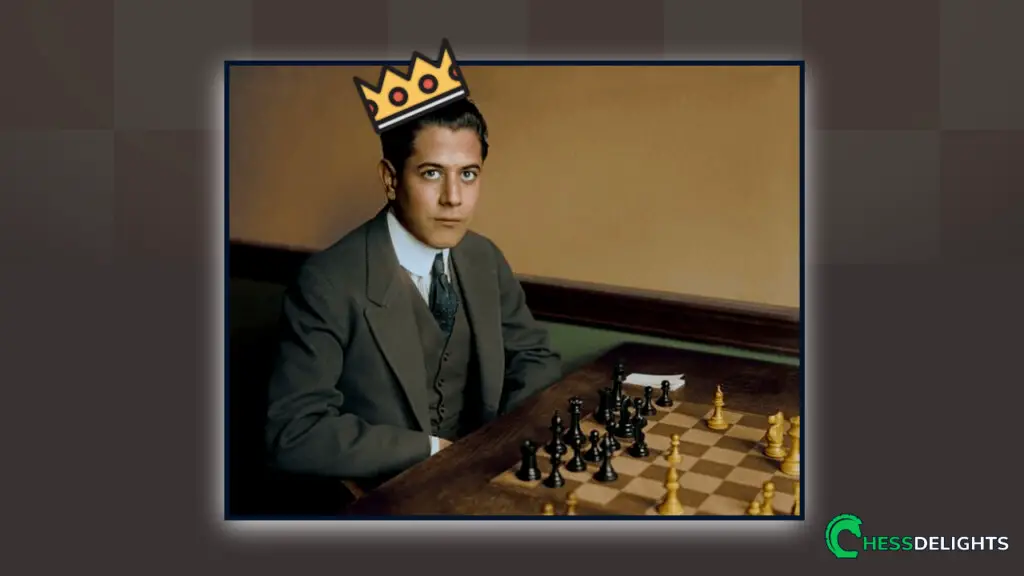Studying a chess book is more than just reading the words.
It's about understanding the strategies, examining the diagrams, and trying to think like the grandmasters that came before you.
As a former tournament player and an avid chess enthusiast…
…I’m a firm believer in the art of learning, I've spent quite some time myself in numerous chess books.
It's more than just a mere reading exercise; it's a deep dive into the minds of grandmasters, a journey through strategic battles and an exploration of intricate diagrams.
Each page turn is an invitation to step into the shoes of a grandmaster, to see the chessboard through their eyes and to unravel the complexity of their thought processes.
Here are some of the most common and unique tips to help you maximize your study time with a chess book.
Table of Contents
1. Use Your Chess Set
One of the most popular and effective ways to study a chess book is to have your chess set by your side.
This method is not just about reading; it's about creating an immersive learning experience.
Why Use a Chess Set?
Using a chess set allows you to physically move the pieces as per the moves described in the book. This hands-on approach can help you better visualize the moves and understand the strategy behind them.
I remember when I first started studying chess, having a physical chess set with me helped me visualize the strategies better.
I've always found it incredibly helpful to keep my chess set close at hand when delving into a chess book.
The Benefits of a Physical Chess Set
There is something incredibly helpful about keeping your chess set close at hand when delving into a chess book.
Here are a few reasons why:
- Visual Learning: Seeing the pieces on the board helps you to better understand each move.
- Practice Makes Perfect: Physically moving the pieces can help ingrain the moves in your memory.
- Understanding Strategy: Visualizing the entire board allows you to understand the overall strategy, not just individual moves.
So next time you are ready to study a chess book, remember to bring your chess set along.
It's a simple yet effective method to boost your learning.
2. Assume the Book is Full of Mistakes
This might sound counterintuitive, but it's a useful exercise to approach the book as if it's full of mistakes.
By actively looking for errors, you'll engage more deeply with the material and understand the moves better.
This approach can yield several benefits:
- Enhanced Understanding: By questioning what you read, you'll push yourself to delve deeper into the concepts, leading to a more profound understanding of the game.
- Improved Critical Thinking: This practice will hone your critical thinking skills, which are essential in chess as well as in many other areas of life.
- Active Learning: By actively looking for potential errors, you'll become an active learner rather than a passive recipient of information. Active learning has been shown to improve retention and comprehension significantly.
Suggested Reads:
For more insight on common misconceptions in chess, I recommend reading this book: The Amateur's Mind: Turning Chess Misconceptions Into Chess Mastery.
It provides an enlightening discussion on widespread myths and misconceptions in the game that can help you clear up any misunderstandings and improve your gameplay.
Remember, the goal is not to discredit the book or demean the author but to challenge your own understanding and push your cognitive boundaries.
So the next time you pick up a chess book, keep an open mind, question what you read, and see how this approach transforms your game.
3. Start with the Main Lines
Main lines are the most common sequences of moves in a particular opening or position.
They are the heart of any chess book and should always be your first point of focus.
Think of the main lines as the trunk of a tree.
They provide the foundation upon which other branches (variations) grow.
If you understand the main lines well, you'll find it easier to comprehend the variations.
Recommended reading: If you're looking for the best book that teaches the principles of chess written by a former World Chess Champion – read this article!
Here are some important points to remember:
- Understanding the purpose of each move: Before moving on to the variations, make sure you understand the purpose of each move in the main line.
Ask yourself questions like:
Why is this move recommended?
What is it aiming to achieve?
What happens if I don't make this move? - Practice the main lines: Reading about the main lines is not enough. Practice them on a chessboard as much as possible.
Play the main lines against a friend, or use a chess app. This will help you memorize the moves and understand their implications better. - Avoid Getting Lost in the Variations: Studying the variations is important, but only after you've mastered the main lines.
Try not to get lost in the variations. Remember, variations are only potential branches that could occur.
Focus on understanding the main lines first. - Use Annotations: Most chess books are filled with annotations that provide insights into the moves.
Use these annotations to deepen your understanding of the game.
They often explain the reasoning behind a move, the potential strategies, and the possible responses from the opponent. - Take Your Time: Mastering chess takes time. Don't rush through the book.
It's better to fully understand one main line than to skim through several of them. Take your time and ensure you understand each concept before moving on.
To sum up, remember to start with the main lines, understand each move, practice regularly, and use annotations to your advantage.
Recommended reading: If you want to read more about chess notations, check out this article to learn everything about chess notations.
4. Utilizing Chess Software for Improved Gameplay
Many contemporary chess players vouch for using chess software like Chessbase or SCID to input and dissect the games as well as variations mentioned in a chess book.
This method provides an interactive platform to visually comprehend and scrutinize the games in a more engaging manner.
Points you need to consider:
- Choosing the Right Software: Software like Chessbase and SCID are highly recommended by professional players.
Understanding the pros and cons of each can help you pick the one that suits you best. - Entering Games and Variations: Learning how to effectively input games and variations into these programs can significantly enhance your learning process.
- Analyzing Your Moves: Learn how to use the software's analytical tools to understand your strengths and areas of improvement.
- Interactive Learning: These software programs provide a more visual and interactive approach to learning, making the process more engaging and effective.
5. Buy Chess Books in Digital Formats
If you're comfortable with technology and enjoy working on a computer, it might be time to consider expanding your chess library in a digital format.
By opting for digital chess books, you can save precious time as you no longer need to enter moves manually.
Digital chess books offer a more interactive experience and make it easier for you to engage with the games.
Not only do they come with a user-friendly interface, but they also provide instant access to a wealth of information and various interactive features.
Here are some benefits:
- Some digital chess books eliminate the need for manual move entry: They provide a more interactive experience.
- Digital chess books are user-friendly and easily accessible: They can enhance your learning experience with their various interactive features.
Remember, the goal is not to replace physical books entirely but to supplement your learning experience with digital ones.
Embracing technology can work wonders for your chess skills!
Our Popular Product
Limited Offer ChessDelights Edition of Jose Raul Capablanca's Chess Fundamentals Book PDF
Now: $4.99 Only Regular Price: $6.99
6. Establish a Quiet Study Space
Creating a serene and interruption-free study space can significantly boost your focus and learning capacity.
Whenever feasible, avoid any distractions during your study time.
Here are some tips on how to effectively set up a peaceful study environment:
- Choose a Quiet Space: The quieter the surroundings, the better you can concentrate. If you can't find a quiet place, consider using earplugs or noise-cancelling headphones.
- Ensure Good Lighting: Good lighting is essential to reduce strain on your eyes and help maintain focus.
- Keep Your Study Space Clean and Organized: A clutter-free desk helps to maintain a clutter-free mind. Keep only the essentials for your study on the desk.
- Make it Comfortable: Choose a chair and desk of comfortable height. Avoid studying on your bed as it can make you feel sleepy.
- Personalize Your Space: Add a plant, some pictures or anything else that makes the space feel more personal and enjoyable.
Recommended reading: If you want to learn how chess can improve your creativity, check out this article for complete reference.
7. Use a Second Board for Variations
This approach allows you to visualize the potential consequences of divergent moves, while maintaining a firm grasp on the progression of the main game.
By doing so, you can enhance your understanding of the game's complexity, improve strategic thinking, and anticipate your opponent's moves more effectively.
Helpful Tips:
- Allocate a dedicated space for your second chess board: It should be within easy reach but separate from your primary board to avoid any confusion.
- Try to predict the outcomes before you make the moves: This will sharpen your foresight and decision-making skills.
- Practice patience: Studying chess variations is a process. The goal isn't to rush, but to deepen your understanding of the game's intricacies.
- Review and compare the outcomes of the main game and your variations: This analysis will provide valuable insights into how different decisions could have shaped the game's direction.
Incorporating a second chess board into your study routine can be an effective tool in studying your chess books.
Complete Guides: If you want to learn more check out our complete effective learning strategies guides resource page.








